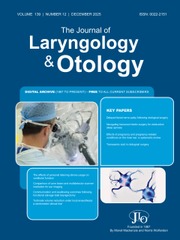No CrossRef data available.
Article contents
Cutaneous tumour seeding following percutaneous sampling of a thyroid malignancy
Published online by Cambridge University Press: 01 April 2025
Abstract
To report a case of cutaneous tumour seeding following core biopsy of a thyroid malignancy.
This paper presents a case report of cutaneous tumour seeding following core biopsy and a review of the literature concerning the role, and risks, of fine needle aspiration and core biopsy in the diagnostic evaluation of neck lumps.
A 75-year-old woman presented with a left-sided level IV neck lump adjacent to the left lobe of the thyroid. Fine needle aspiration revealed that the neck lump contained follicular epithelial cell groups; however, nuclear grooves and pseudo-inclusions could not exclude a diagnosis of papillary thyroid carcinoma. Subsequent core biopsy confirmed features of a thyroid neoplasm, although abundant necrosis and limited lesional cells within the specimen made histological diagnosis difficult. The patient underwent total thyroidectomy and left-sided selective neck dissection for symptom control. A superficial nodule overlying the core biopsy site was noted at operation and excised; it was found to contain cells of poorly differentiated papillary carcinoma identical to the subsequently confirmed thyroid primary.
This case highlights a rare but important risk associated with sampling neck lumps. Nevertheless, ultrasound-guided sampling is an essential investigative step with great diagnostic accuracy and patient acceptability.
Keywords
- Type
- Clinical Records
- Information
- Copyright
- Copyright © The Author(s), 2025. Published by Cambridge University Press
Footnotes
Ms H Coleman takes responsibility for the integrity of the content of the paper


